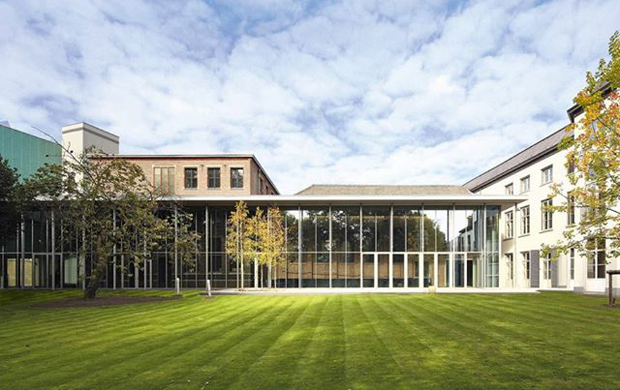
New art quarter takes shape in the Netherlands
80km south of Amsterdam, in the historical forest town of Hertogenbosch, art is finding a new home. . .
When it comes to Dutch museums, Amsterdam has been pulling focus recently, what with Benthem Crouwel’s Stedelijk expansion and the 10-year restoration of the Rijksmuseum by Spanish practice Cruz y Ortiz Arquitectos - both of which completed earlier this year.
However, 80km south of the capital in the province of North Brabant, a new museum quarter is being established. It’s all happening in the historical city of Hertogenbosch, known by the Dutch as Den Bosch (which means ‘the forest’). Here, the Stedelijk’s outpost has a brand new building, and the existing Noordbrabants Museum has been renovated and extended. It may be stretching it a bit to label two cultural facilities a ‘quarter’, but where some lead, others are usually bound to follow.
{media2}
Both projects were put in the hands of Janneke Bierman and Judy Henket. Together, as Bierman Henket, they’ve successfully handled a host of Dutch museum projects over the last 20 years, including the pavilion at Rotterdam’s Museum Boijmans van Beuninge, Teylers Museum in Haarlem, the Kleine Hermitage in Amsterdam, the Wiebengahal in Maastricht and Utrecht’s Catharijne Convent. However, the Stedelijk commission was their first chance to do a museum building from scratch.
It’s all glazed facades, with a massive statement white spiral staircase. Those floor-to-ceiling panes look out onto an 18th century garden, the other side of which is the Noordbrabants Museum. “Space, openness and transparency: those are the keywords,’ says Bierman, and the two institutions are linked via a glass corridor.
{media1}
The interiors of Bierman Henket’s pleasingly austere design for the Stedelijk have been spiced up by Brazil’s best designer export, the Campana brothers. Under the theme of ‘Un-Dutch’ they created furniture and furnishings for the reception area, auditorium and shop. Hence the reception desk of curvy plywood, and the large upholstered modular seating. “We thought that the location needed something organic, a strong material presence,” they explain. “We wanted to deconstruct the rigidity of the museum building by bringing in the natural world.”
While the Stedelijk exhibits modern art and design, the Noordbrabants has period regional artworks. The building that Bierman Henket has extended was itself renovated in the 1980s by fellow Dutchman Wim Quist - also responsible for the Kröller-Müller Museum in Otterlo near Arnhem, and the Maritime Museum.
If, like us, you're fascinated by the way museums have shifted in focus in recent years - they now serve more than ever as research centres, memorials, contemporary galleries and even single collection affairs devoted to a body of work amassed by a particular individual - there's a great book in the store called New Museums which goes into all of this (and in a really enlightening way).
It also includes the higher-profile projects of recent times including the Great Court at the British Museum, London, by Foster + Partners; the Rosenthal Center in Cincinnati, Ohio, by Zaha Hadid; and of course, the Jewish Museum in Berlin by Daniel Libeskind. Take a look - we guarantee you'll want it.